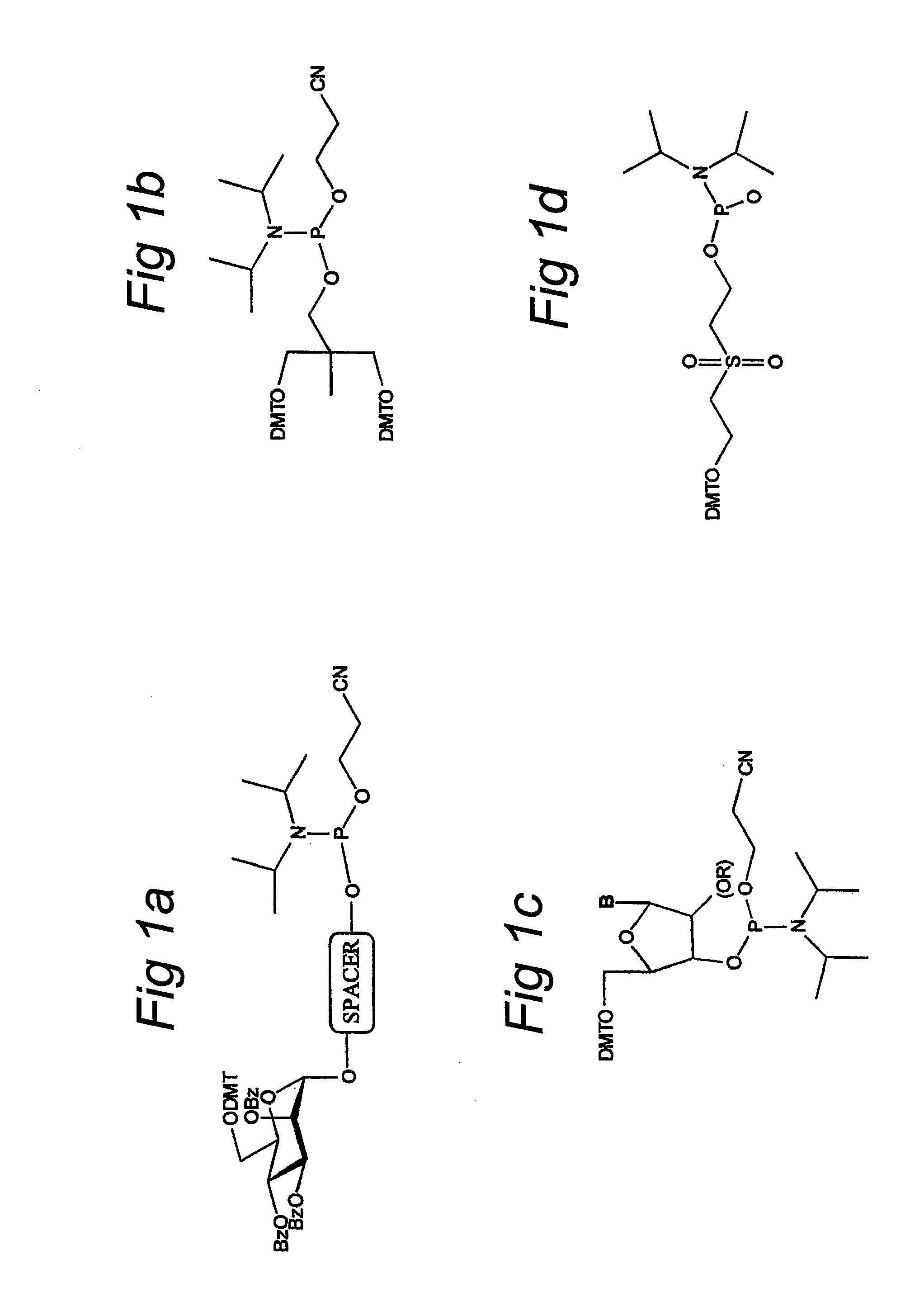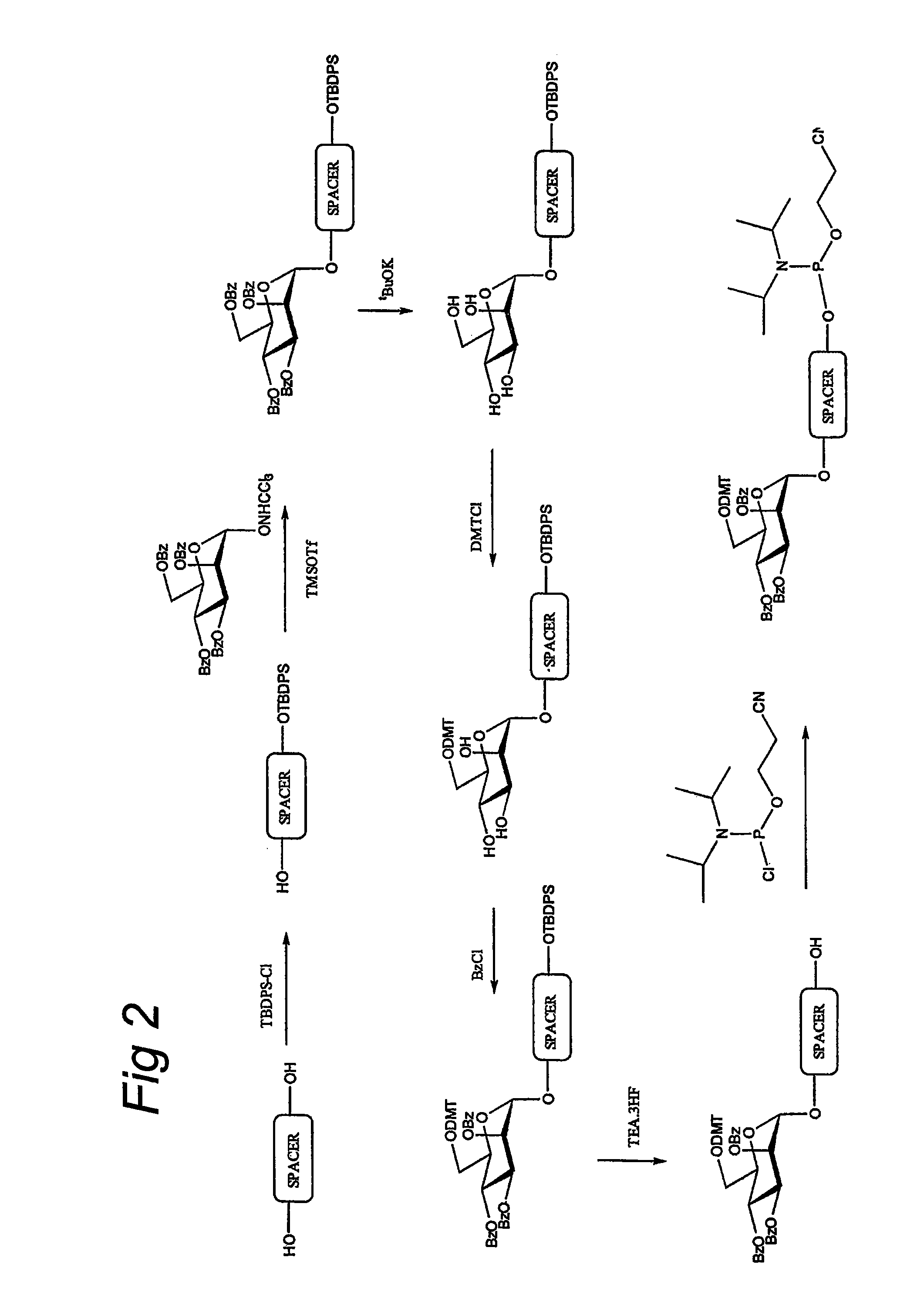Mannose-6-phosphate receptor mediated gene transfer into muscle cells
- Summary
- Abstract
- Description
- Claims
- Application Information
AI Technical Summary
Problems solved by technology
Method used
Image
Examples
example 1
Overview Building Blocks for Synthesis of the Glycoside-Compounds
[0037]To be able to produce the glycoside-compounds, a multiple step synthesis was designed. All syntheses were performed using standards organic chemical synthesis procedures. The separate building blocks 1A and IB (FIG. 1A and IB respectively) were synthesised, whereas the remaining blocks (FIG. 1C and ID) were purchased (FIG. 1).
example 2
Assembly of Building Block 1
[0038]Building block 1 (FIG. 2) is composed of the glycoside linked through a SPACER to a moiety X. SPACER is composed of a C4-, C5-, or Cl l-alkyl or tetrathylene glycol. Moiety X is composed of a phosphate, amide or disulfide bond.
example 3
Assembly of Building Block 2
[0039]Building block 2 (FIG. 3) is designed to connect Building block 1 to the compound, in example 4 to an oligonucleotide.
PUM
| Property | Measurement | Unit |
|---|---|---|
| Current | aaaaa | aaaaa |
| Digital information | aaaaa | aaaaa |
| Mass | aaaaa | aaaaa |
Abstract
Description
Claims
Application Information
 Login to View More
Login to View More - R&D
- Intellectual Property
- Life Sciences
- Materials
- Tech Scout
- Unparalleled Data Quality
- Higher Quality Content
- 60% Fewer Hallucinations
Browse by: Latest US Patents, China's latest patents, Technical Efficacy Thesaurus, Application Domain, Technology Topic, Popular Technical Reports.
© 2025 PatSnap. All rights reserved.Legal|Privacy policy|Modern Slavery Act Transparency Statement|Sitemap|About US| Contact US: help@patsnap.com



